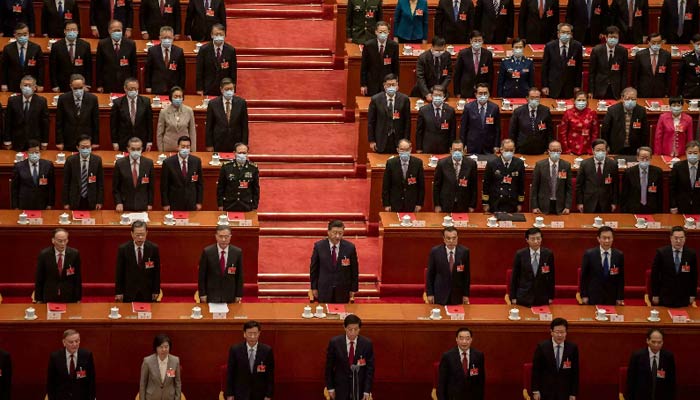A closer look at China's under-the-radar reforms
China has implemented a series of institutional reforms with a focus on the financial sector
At a time when all eyes were on the two US regional bank failures and the government-orchestrated takeover of Credit Suisse, China has implemented a series of institutional reforms with a focus on the financial sector. It is worth deciphering the Chinese reforms, given their wide-ranging implications.
On the heels of the Two Sessions in March, the Communist Party Central Committee and the State Council jointly issued a reform plan with a view to modernising the governance systems to match the requirements of the socialist economy.
A Central Financial Committee has been established to engage in top-level planning, coordination and supervision of the financial industry to foster financial stability and development, in conjunction with the newly created Central Financial Work Committee. The freshly minted Central Financial Committee, directly reporting to the State Council, is clearly set up to tackle critical problems and prevent systematic risks facing the financial industry.
Was China aware of the undercurrents facing the global financial system ahead of others? China admittedly has its share of challenges — local government debt and the property market, to name a few. That said, the state's efforts to proactively circumvent any systematic issues in a more centralised and coordinated fashion should bolster confidence, especially in light of the recent global banking turbulence.
China's official GDP growth target of 5% set at the National People's Congress in early March initially looked underwhelming. Now it looks pragmatic, given the increasingly fragile global environment. The PBoC's decision on 27 March to lower the reserve requirement ratio by 25 basis points also reinforces the commitment to ensuring ample long-term liquidity to shore up growth amidst the global banking sector uncertainty.
Some broker-dealers were reserved about China's outlook, arguing that China could become too complacent about the post-pandemic recovery to come up with further expansionary monetary and fiscal measures. On the other hand, recent economic prints suggest a solid recovery is underway.
Fixed asset investment saw growth accelerate from 3.6% y/y in December 2022 to 5.5% in the first two months of 2023. Retail sales recovered to 3.5% y/y growth during the same period. The housing market also appears to be gradually stabilising, given the uptick in transactions and property prices, helped by recent measures, including the mortgage rate adjustment mechanism that stimulated first-time buyers' demand.
With services such as tourism yet to bounce back to pre-pandemic levels partly due to capacity constraints, China has more headroom for growth from re-opening. This warrants the question of whether additional policy boosts are needed.
Despite the recovery thus far, China is not short of sore spots. Sentiment and confidence levels have yet to improve. Private investments have grown by less than 1% since last year. Retail sales of big-ticket items, such as automobiles, remain weak. Youth unemployment is elevated at 18.1%.
Addressing all this requires more than a simple policy bazooka. The authorities may need to go beyond traditional state-owned enterprises and zero in on the digital economy to boost innovation and entrepreneurship, the magnet for young talent to contribute to the economy. Premier Li Qiang's pledge of supporting entrepreneurs during his first public address after taking over office in March is the first step in that direction.
Notably, the new institutional reform of establishing the Central Science and Technology Committee to build out a national innovation system is symbolic of the national mandate to mobilise resources to spur technological advancement. The National Data Administration has been formed to accelerate the national buildout of digital infrastructure, covering AI, big data, and industrial Internet, underpinning the strategic importance of data in China.
A close read of the National Development and Reform Commission's 2023 draft plan gives us further insights into the blueprint of what lies ahead.
The plan broadly calls for the need to expand domestic consumption and improve offerings from service sectors covering tourism, cultural activities, elder care and medical services. There is an emphasis on policy stimulus to fuel demand for electric vehicles (EV), smart home appliances, e-commerce, and green building materials.
The government is also relying on supply-side reforms. Using EV as an example, the plan promotes building more charging infrastructure and carparks, as well as improving efficiency in the transport infrastructure project review and execution.
While authorities have maintained prudent fiscal discipline, the structural challenges and a pro-business new leadership signal that targeted supportive policies will likely be rolled out in the ensuing months.
Areas that will likely receive further policy boosts include consumer discretionary sectors, e.g. EV and home appliances, as well as areas strategically critical to China's self-sufficiency and security, including semiconductors, software, automation and defence. These industries represent a bigger portion of China's onshore A shares than of the offshore equity market.
Moreover, onshore liquidity boosts, coupled with the limited risk of global fund outflow, make China A shares an interesting diversifier away from USD-denominated investments, in our view.
Raymond Cheng is the Bank’s Chief Investment Officer, North Asia.
-
AI boom set to lift TSMC’s Q4 profit by 27%
-
An eye on 'global economic instability' as shares slumps, tensions intensify
-
Tesla dethroned: BYD shocks EV market as top seller in 2025
-
China sets up $8.9B fund to boost 2026 consumer goods trade-in
-
Meta to acquire Chinese AI startup Manus to expand advanced AI capabilities
-
China to roll out action plan for digital yuan expansion
-
Amazon halts plan for 'drone delivery in Italy' just before launch
-
Europe’s crypto adoption gains regional momentum; Who’s investing the most?












